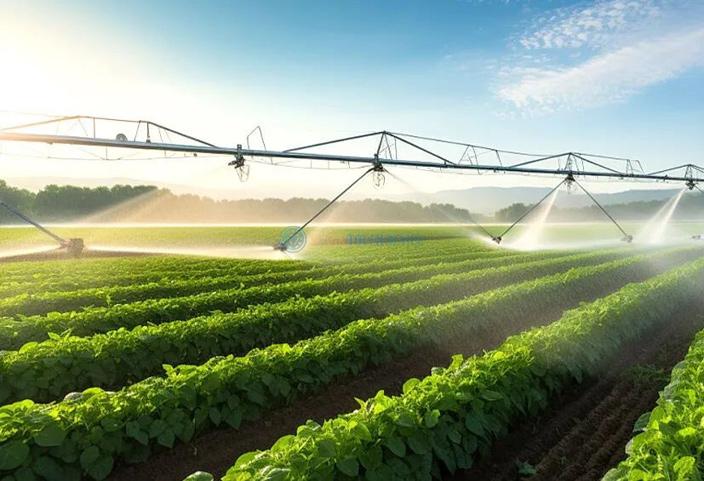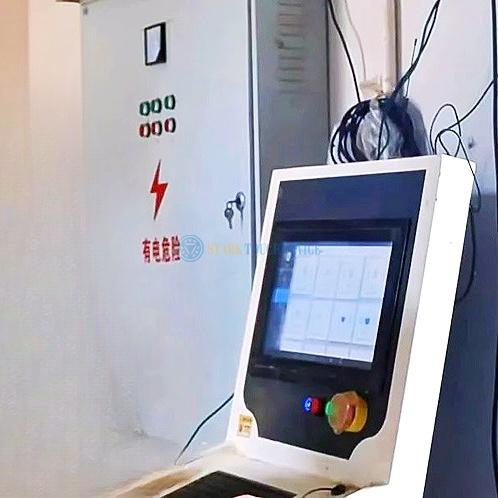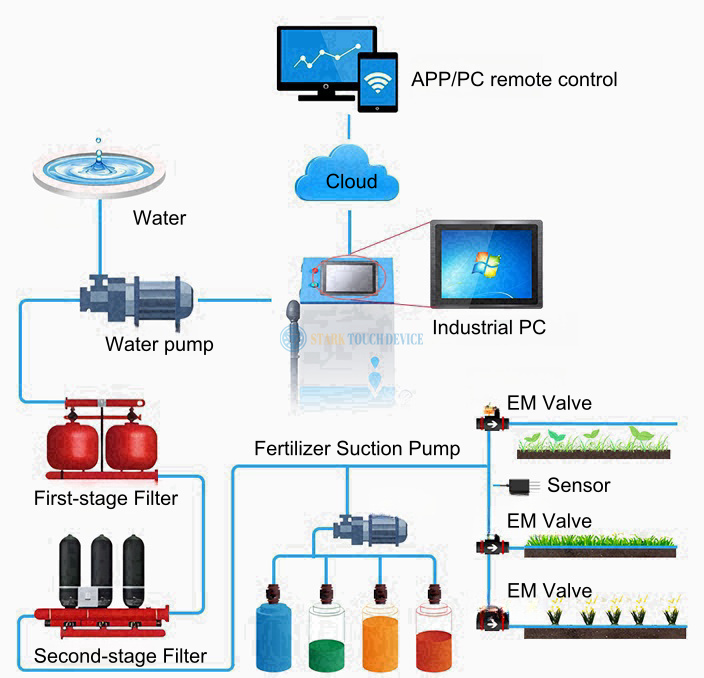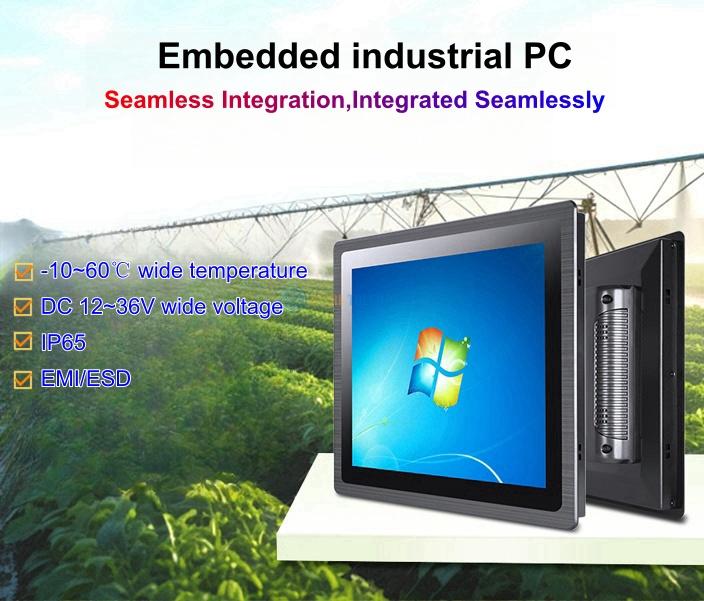Welcome STARK TOUCH DEVICE!
Smart city
Empower Efficient Application of Smart Agriculture Water-Fertilizer Integration
I. Industry Development Background
The integration of water and fertilizer irrigation represents the pinnacle of modern agricultural advancements. By integrating sensors, IoT, big data, and other information technologies, it enables precise control over water and fertilizer ratios and applications, scientifically addressing the pressing issues of water scarcity and drought. This is crucial for enhancing agricultural production efficiency and quality, driving the transformation and upgrade of traditional farming models.

II. Project Application Requirements
An agricultural technology group offers water-fertilizer integration products and solutions to large-scale farms. In their system, the central controller must receive real-time soil moisture data from sensors, compare it with preset soil parameter ranges, and automatically control the opening and closing of solenoid valves for timed and quantitative irrigation, thereby reducing the frequency and duration of manual intervention.
Moreover, farms often face challenges from rain, dust, extreme temperatures and humidity, altitudes, and atmospheric pressure. The hardware performance of the controller directly impacts the system's operational efficiency.
III. Product Solution
To address these requirements, we offer a 15.6" second-generation ARM-based industrial all-in-one computer (TPC156-A2), tailored for applications in terms of processors, communication and acquisition, software support, and protection. Across multiple client projects, our solution has achieved a 40% increase in water and fertilizer utilization, a 30%-70% improvement in water savings, and helped farmers reduce costs and increase incomes.

High-Performance Computing Platform for Scientific Irrigation
Our all-in-one is equipped with a Rockchip® RK3288 quad-core Cortex-A17 processor, clocked at 1.8GHz. Leveraging its robust multi-threading and graphics processing capabilities, it smoothly runs intelligent detection algorithms to analyze climate and soil sensor data, enabling scientific adjustment of water and fertilizer irrigation strategies.Digital Perception Facilitates Minimal Manpower in Fields
Featuring extensive I/O functionality, Gigabit Ethernet ports, 2 COM ports, and support for 4G, dual-band WiFi, and other wireless modules, our product swiftly exchanges sensor data and solenoid valve control signals. It digitally perceives environmental and device states, supports cloud applications like big data, and enables remote management. Users can access real-time field data and remotely operate equipment via PCs or mobile apps, realizing minimal to no human intervention in smart farmland management.

Seamless Integration of Software Interaction and Visualization
Equipped with a 1920*1080 Full HD capacitive touchscreen and IP65-rated waterproof and dustproof panel, our device supports glove-touch operation. Running on an ARM open-source architecture, it is compatible with Android, Linux, Ubuntu, and other operating systems, as well as personalized software. SDK development kits and firmware customization services are available, empowering clients to build intuitive, smart, and easy-to-use visual interaction platforms.Stable and Reliable 7*24-Hour Application Deployment
Designed with a 3mm slim front panel specifically for rack-mount devices, our all-metal enclosure is corrosion-resistant and thermally conductive. Meeting standards for wide temperature (-10~60°C), wide voltage (DC 12-36V), waterproofing, dustproofing, and EMI/ESD protection, it thrives in the harsh agricultural environment.

IV. Application Empowerment
Our industrial all-in-one computers, combining hardware prowess with software development services, have been successfully implemented in various scenarios including farmland monitoring and management, smart irrigation, smart greenhouses, agricultural machinery control, and crop monitoring. They continuously contribute to the advancement of intelligent, automated, and unmanned smart agriculture.


